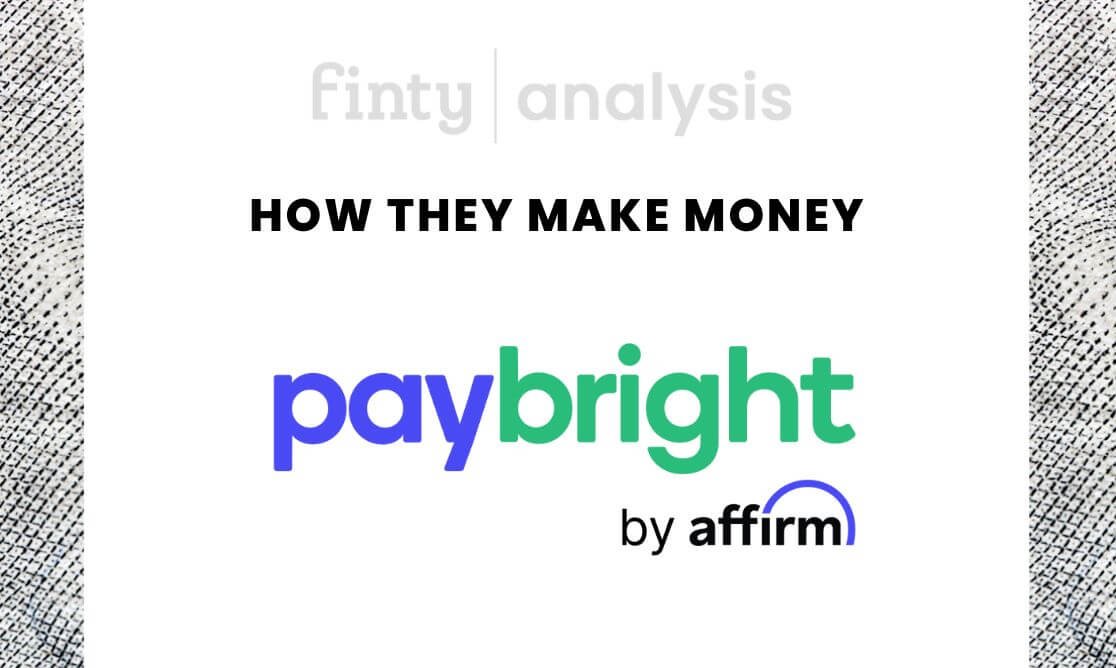- PayBright is a Canadian buy now pay later service.
- It allows you to pay for retail transactions using a loan rather than a debit or a credit card.
- Find out how a company that charges no interest on their installment plans can make money.
PayBright's installment plans have experienced rapid adoption as an alternative to credit and debit cards, giving consumers a way to spread out the cost of the purchases without building long term debt.
Find out how PayBright works, how the company makes money, and how it could grow in future.

Coming up next
What does PayBright do?
PayBright is one of several new services designed to make it possible for consumers to buy now and pay later.
You can request a PayBright loan to pay a point-of-sale purchase in-store or online at a merchant that supports this service.
While other point-of-sale competitors do not conduct credit checks when you sign up, PayBright runs a credit check for new accounts.
Rather than paying with your credit card, you can get 0% APR with PayBright as long as you pay it off in 4 fixed installments. If you need more time to pay it off, you will be charged a negotiated APR upon contract approval.
How does PayBright work?
You can use PayBright to pay for a transaction at 1 of 8,500 retailers throughout Canada. Once you have opted into a PayBright loan and have been approved, you can choose to pay down your loan in 1 of 2 ways.
You can pay in 4 easy installments with your first payment being due post-approval. This option does not impose any processing fees or interest during this payment arrangement.
There’s also the option of negotiating how much you can pay on your loan on a month-to-month basis. This will be based mainly on your credit score before the negotiation is finalized. An APR interest rate will also be decided for this month-to-month payment arrangement.
How PayBright makes money
PayBright makes money by imposing interest fees on their month-to-month loan plans, the merchant fees that retailers pay to use PayBright as a form of payment for their business, and the processing fees involved in each transaction throughout a month-to-month loan contract. Late fees are another way the company makes money.
Interest
If you are on a month-to-month loan with PayBright, you will pay interest at a rate negotiated at the time of your contract. The rate is personalized based on your credit score and ranges between 0% to 29.95%.
Merchant fees
Merchants have to pay PayBright fees for using their service as a payment option. This fee is how they are able to give consumers interest-free payment plans. Furthermore, merchant fees generate revenue for the company.
Processing fees
While processing fees are not charged on the Pay in 4 loan plans, a small processing fee is charged on the month-to-month loans.
Late fees
If you are late on your installment plan, you will be charged a $10 late fee. You will be charged a $30 late fee on your month-to-month loan plan if you are late on a payment.
Future growth engine
PayBright was the first buy now pay later service for Canadians, but it faces stiff competition from well-funded domestic and international alternatives.
In a sign of how they plan on growing, PayBright partnered with Clover in 2021 to make their service a payment option for any small business using Clover’s point-of-sale platform.
Other obvious opportunities for growth include partnering with hosted ecommerce platforms such as Shopify and WooCommerce.
Selling advertising to brands — who could promote their products and services in the PayBright app — could be a significant revenue stream for PayBright. Afterpay have already launched their own ad platform.
Competitors
PayBright’s main competitors are Affirm, Afterpay, and Sezzle. Affirm acquired PayBright and offers loans of up to $17,500 that can be paid in a variety of set month-to-month installment plans.
Afterpay is one of PayBright’s main competitors. It is experiencing rapid growth in key demographics across multiple markets. Afterpay was acquired by Square (now known as Block). They have deep pockets and can invest heavily in brand marketing.
Sezzle supports American and Canadian consumers at over 30,000 retailers. They make most of their revenue from merchant fees.

